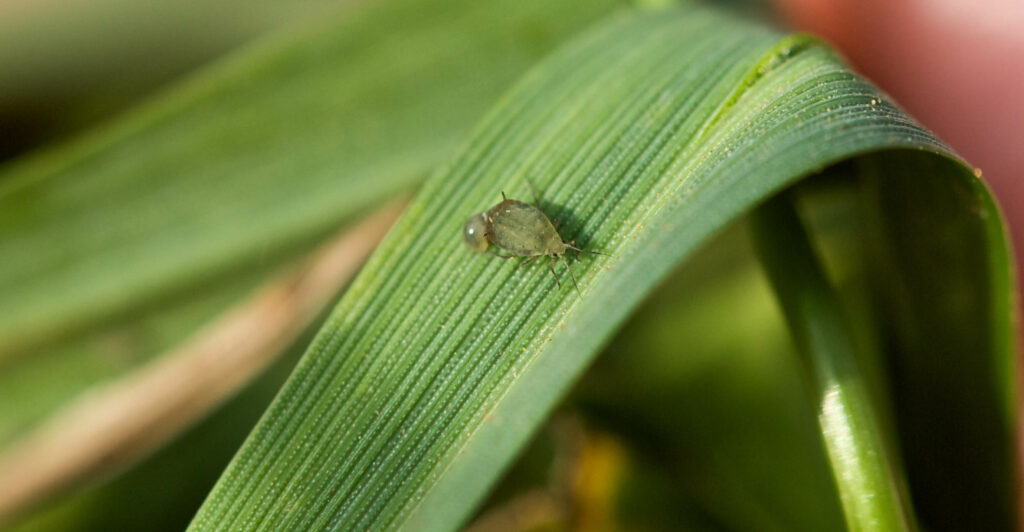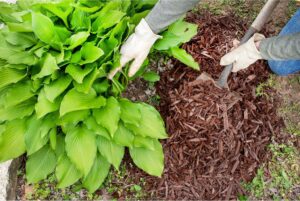By Alisa Boswell-Gore
STILLWATER, Okla. – Summertime equals aphid season for Oklahoma producers, but Oklahoma State University Ag Research and Extension specialists are here to help.
Although many of today’s crop varieties are resistant to sugarcane aphids, it’s still important to keep an eye out for these little green sorghum lovers. Tom Royer, OSU integrated pest management coordinator, said the best way to combat aphids is to use the Glance-N-Go app developed by OSU scientists several years ago. It helps producers determine if a grain sorghum field needs to be treated with insecticide from an infestation of aphids by sampling two leaves from each of three select plants at a sample location.
“It’s backed by research,” Royer said of the app. “It’s simple system to use, and it saves a lot of time with sampling. We only want fields to be treated if they need to be, and we want to save a scout or producer time.”

Producers enter into the app the estimated cost to treat the field for aphid infestation and the price they hope to get for their crop. Then they collect samples of the crop until the app tells them whether they should treat or not treat for aphid infestation.
“You’re not counting aphids; you’re determining whether a particular plant has on its two leaves 50 or more aphids. If it’s 50 or more, it’s infested,” Royer said.
The Glance-N-Go app is available to download for free on the Apple and Google Play stores.
Aphids aren’t the only problem in Oklahoma crops this summer with some new insect visitors arriving on the scene.
“We’re always concerned about grain sorghum pests, but I’ve also seen some issues in soybean fields this year,” Royer said.
Many pests, such as grasshoppers, love hot weather, so other new pests have popped up recently. Head worms and aphids have been reported since 2014, said Royer, but added to the mix this year are false chinch bugs in soybean fields. He said the new pest was primarily a problem for producers who did not exercise weed control before planting.
“Those are things that need to be watched, so you need to get out into your crops and pay attention to what’s going on,” Royer said. “False chinch bugs tend to congregate in spotty crowds.”
Young soybean seedlings are at risk when large numbers of chinch bugs are attacking the plants. Producers can often spot-spray the insect swarms with an insecticide, such as bifenthrin. When they become adults, chinch bugs will likely fly away.
“I’ve even heard about roly-polies getting into soybeans, and that’s a new one on me,” Royer said. “Someone called me this year and said they had issues with those bugs coming in and taking out some of their stands.”
Once soybean plants have matured, roly-polies cannot affect the crop, but they can damage the plants as seedlings by chewing on them. Royer said since they are an uncommon problem, there is not much research-based information on how to control them, but current weather conditions will likely kill many of these bugs because they do not do well in hot, dry conditions.
“If a problem is significant and persistent, products containing lambda-cyhalothrin, bifenthrin, zeta-cypermethrin or some combination of those products should work,” Royer said. “I would suggest using as much water carrier as possible and perhaps apply in the evening to prolong the life of the insecticide.”
For the latest information on insecticide products registered for control of pests in sorghum or soybeans, contact your local OSU Extension county office and consult the 2002 OSU Extension Agents’ Handbook of Insect, Plant Disease, and Weed Control. To learn how to manage hickory shuckworm infestations in pecans, read the latest OSU Pest e-Alert.
OSU Agriculture is dedicated to improving the quality of life of Oklahomans through science-based information and education. It is comprised of the Ferguson College of Agriculture and two state agencies: OSU Ag Research and OSU Extension.










